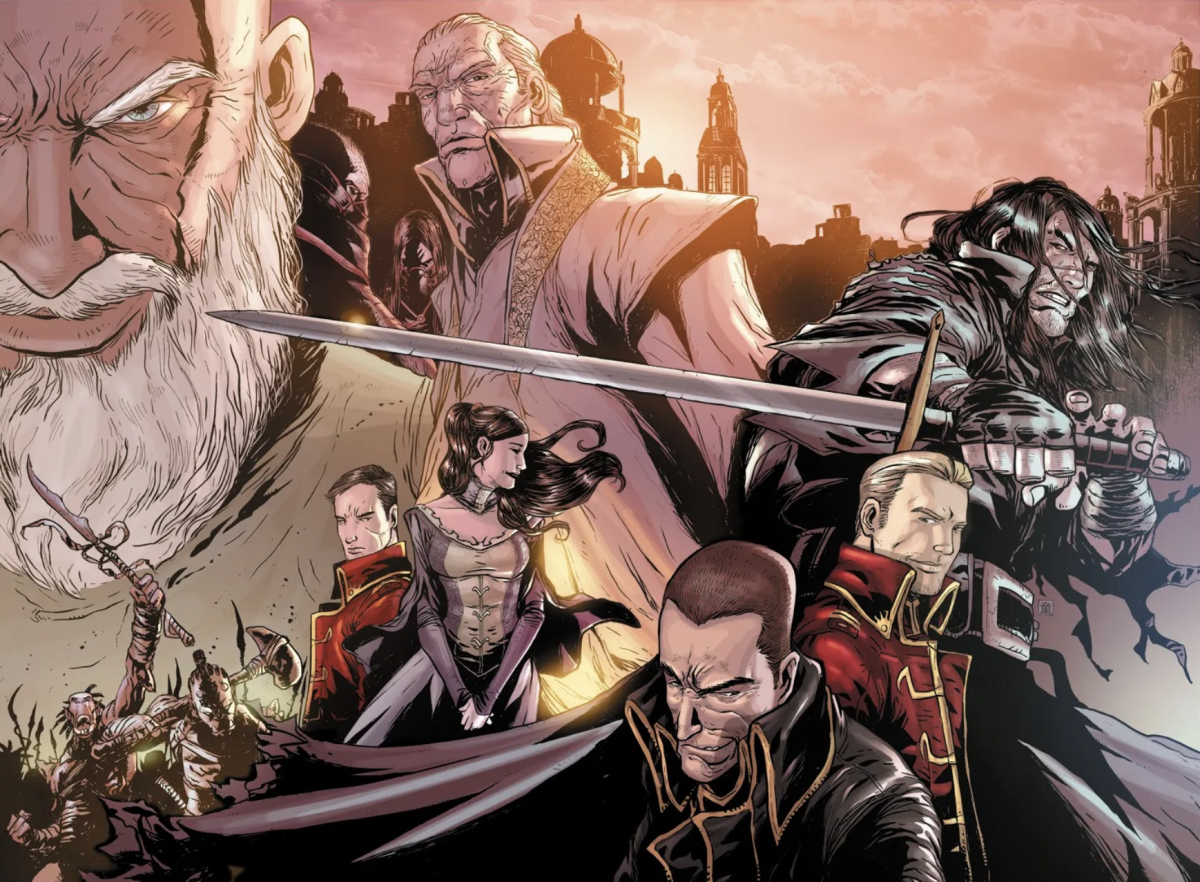If George R. R. Martin is the aging king of grimdark fantasy, Joe Abercrombie is its heir apparent. His “First Law” trilogy, recently voted as the second best fantasy series on the subreddit r/Fantasy, trails only J. R. R. Tolkien — whose reign is timeless — and his Middle Earth Universe. Since the popularization of grimdark through Martin’s “A Song of Ice and Fire,” countless writers have been inspired to carry the genre torch, ushering in a new age of fantasy.
Grimdark, sometimes also called “dark fantasy,” plunges readers into pseudo-dystopian settings where bleakness and brutality are the roads of survival. If you’ve ever watched or read “Game of Thrones,” you’ve already dabbled in this previously niche subgenre. Whereas traditional, Tolkien-esque fantasy gives us heroes, grimdark fantasy gives us survivors, characters who claw their way through violent worlds where vengeance is a luxury. Behind the bloody curtain, however, one finds rich, deeply human stories about morally ambiguous characters, and Abercrombie’s “First Law” trilogy stands out as a seminal work of the genre.
One of the most striking qualities of Abercrombie’s work is his subtle and endearing approach to writing. He doesn’t hammer down archaic names and places that might overwhelm and ostracize new fantasy readers. Instead, he carefully builds an emotional atmosphere that grounds and breathes life into his characters. Through rain-drenched action sequences and tenuous court deliberations alike, Abercrombie sets each scene with a warm, almost light-hearted tone that invites readers to step into the shoes of his antiheros.
As the trilogy’s first installment, “The Blade Itself” primarily focuses on setting the scene and introducing its characters before they embark on a mythic journey. The story’s numerous, riveting plotlines take no effort to follow; yet, unsurprisingly, what “First Law” fans admire most about Abercrombie’s debut is the characters themselves, who always find a way to amuse, surprise, and wrench at your heart. It is the constant act of flipping these characters over in your mind like imperfect stones that makes them come to gritty life.
“The Blade Itself” begins with the barbarian Logen Ninefingers ingloriously hacking an axe into a humanoid beast’s head. Not so subtle at first, but Abercrombie swoops in to give us a new, sympathetic lens: This brute, who has a soft side and a touch for magic, has been separated from his found family that he believes to be dead. Instantly, Abercrombie transforms Ninefingers into a man weighed down by his gruesome past — a character who has no choice but the road ahead of him, who feels out of control and unconcerned about the “right” course of action.
A fan favorite and the crown jewel of Abercrombie’s cast is the ultimate pessimist, whom life has thrown down again and again, and whose suffering we twistedly internalize and enjoy: the crippled torturer Sand dan Glokta. Glokta disgusts and terrorizes those who encounter him in his line of work and out of it, but the reader connects to a very different man. Abercrombie endearingly portrays Glokta using his internal dialogue, which sweats the little details of his physical agony and palpable bitterness.
But these are just two widely beloved examples. Even the ancient wizard Bayaz is a source of contradictions, strutting a playfulness and fiery temper that is highly deviant for old mages of high fantasy. This unexpected balance in personality shows how extensively Abercrombie thinks about and wrestles with his creations.
Through his characters, Abercrombie boldly explores the futility of personal ambition in the face of a decaying world. Despite their spirit, hopelessness haunts every character in grimdark fantasy, whether good or evil. In the grand, grey scheme of things, they have no hope for a better life or world than what they were born into. There are too many rules and traditions set in stone that urge them to perpetuate darkness and not enough incentive to break free from the burdensome cycles of trauma. Characters crash into each other, finding new, uglier ways to subvert the system to gain wealth, power, or safety, but never happiness.
The rise of grimdark in modern popular culture has shed light on the age-old clash between plot-driven and character-driven fantasy. As much as fans now love to analyze every Hobbit, dwarf, and wizard under the Middle Earth sun, Tolkien’s trilogy was arguably written with the singular quest to destroy the One Ring front and center, characters falling in line to do his thematic bidding. While the Peter Jackson movies brought those characters to life on screen, is there a place for character studies in the pages of modern fantasy? Abercrombie certainly knows so. With every character-driven work in his robust catalog, he instills confidence in the fantasy community of the genre’s strong and evolving relevance in popular culture.
Taken at face value, the “First Law” world is a dark place and its characters’ histories and actions are heartless, but jumping into a fantasy world has never been so easy. Above all else, Joe Abercrombie knows how to pursue a good story, and, in the process, conjures universally adored characters and plots. In a grimdark universe, even time and morality lose their meaning, challenging the high fantasy traditions established by the likes of Tolkien. But all rules in storytelling are meant to be broken eventually.
Rating: 4/5 stars
“Long Reads and Pleasant Rants” derives its name from “long days and pleasant nights,” a greeting from Stephen King’s fantasy magnum opus: The Dark Tower series. In this column, A&E Associate Editor Gabbi Basa reviews her current speculative fiction reads, including, but not limited to, works of science fiction, fantasy, horror, and magical realism.











MalinkyZubr • Apr 28, 2025 at 11:43 am
Wow! this sounds like another great book. I will definitely have to check it out. This column always gives the best recommendations.